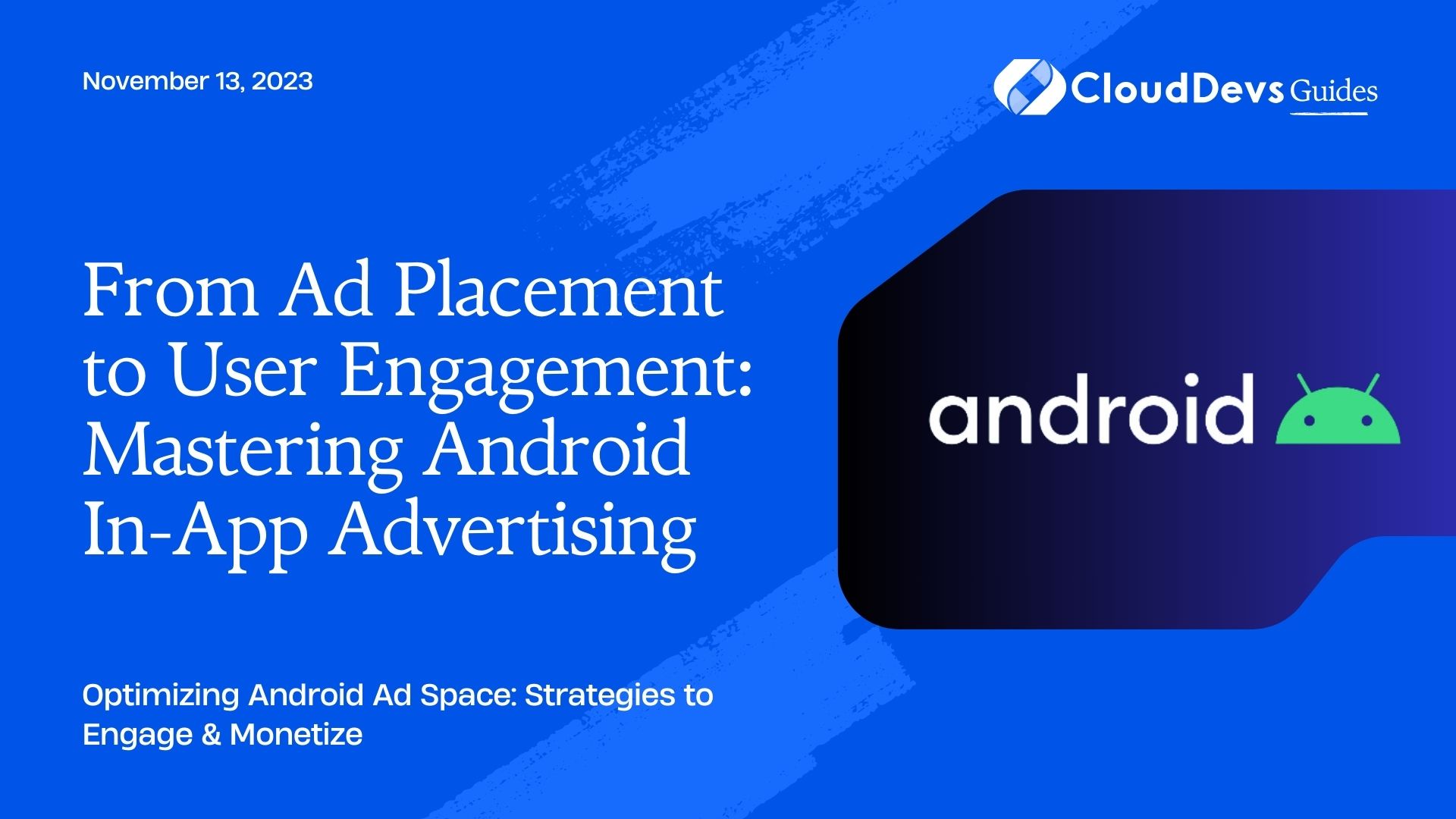From Ad Placement to User Engagement: Mastering Android In-App Advertising
In today’s digital age, in-app advertising has become a significant revenue source for many mobile app developers. For Android developers, particularly, the enormous user base offers a substantial market to tap into. Yet, to get the most out of in-app advertising, one must understand the best practices and methods to maximize ad revenue. This article delves into some key strategies and provides examples to illustrate the concepts.
Table of Contents
1. Choosing the Right Ad Format
There are several ad formats available:
– Interstitial Ads: These are full-screen ads that cover the interface of the app and appear between different UI screens. They are best used at natural pauses or breaks in the app.
Example: A gaming app might show interstitial ads between levels.
– Banner Ads: These are rectangular ads that can be positioned at the top or bottom of an app. They’re unobtrusive but can be less engaging than other formats.
Example: A news app might have banner ads at the bottom of the screen.
– Native Ads: These ads match the look and feel of the app interface, offering a more integrated user experience.
Example: A social media feed could have native ads that resemble regular posts but are labeled as “sponsored”.
– Rewarded Video Ads: Users opt to watch these ads in exchange for in-app rewards.
Example: In a game, watching a 30-second ad video might earn the player extra lives or in-game currency.
Choose the format that aligns best with your app’s user experience.
2. Strategic Ad Placement
Positioning your ads strategically can significantly enhance user engagement. Avoid placing ads where they might disrupt the user experience.
Example: In a puzzle game, placing a banner ad at the top, where it doesn’t obscure the puzzle, is more effective than positioning it at the center.
3. Frequency Capping
This means limiting the number of times a particular user sees the same ad. It can improve user experience and reduce ad fatigue.
Example: If a user sees the same ad every time they open an app, they might become irritated and less likely to engage.
4. Utilize Mediation Platforms
Ad mediation platforms allow developers to serve ads from multiple networks. This ensures the highest paying ads are displayed first.
Example: If Ad Network A offers $2 for an impression and Ad Network B offers $3, the mediation platform will prioritize the ad from Network B.
5. Engaging Ad Content
It’s crucial to display ads that are relevant and engaging to your audience. Many ad networks use algorithms to match ads to user preferences.
Example: A fitness app might display ads for sportswear or health supplements.
6. Use Analytics
Understanding your audience’s behavior can help you optimize ad placement and format. Use analytics tools to gain insights.
Example: If analytics show users often drop off after viewing an interstitial ad, consider reducing their frequency or testing another format.
7. Regularly Update Your App
Regular updates signal to users that the app is active and maintained. With every update, consider optimizing ad placements or trying out new ad formats based on the feedback and data.
Example: If user reviews complain about obtrusive ads, the next update might focus on refining ad placement.
8. Reward Engagement, Not Just Views
Rewarded video ads aren’t the only way to reward users. Offering incentives for engaging with ads can be beneficial.
Example: A music app might offer an ad-free listening hour if users watch a series of ads.
9. A/B Testing
To determine what works best for your app and audience, regularly test different ad formats, placements, and strategies.
Example: If you’re unsure whether a banner or interstitial ad will perform better, run A/B tests to gauge user engagement and revenue for each type.
10. Prioritize User Experience
While ads are essential for revenue, ensuring a smooth user experience is paramount. Avoid overwhelming users with ads.
Example: An e-book reader app might choose to display ads only at the end of a chapter, so readers aren’t interrupted mid-sentence.
Conclusion
Maximizing ad revenue in Android apps is a balance between effective advertising and superior user experience. By understanding your audience, using the right ad formats, and continually optimizing based on feedback and data, developers can significantly increase their ad revenue without alienating their user base. Always remember, an engaged and satisfied user is more likely to interact with ads, leading to sustained revenue growth.
Table of Contents






